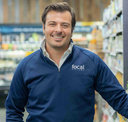

Reimagining Personalization and Loyalty in Grocery Retail
By Shekar Raman, CEO and co-founder, Birdzi
Recently, consumers have been inundated with bad news. Prices for everyday goods are rising, supply chain disruptions continue to threaten product availability, and all before the holidays! These overwhelmed shoppers are going to devote their loyalty to the grocer that will make their life easier this holiday season.
By offering a personalized in-store journey, grocers can foster loyal customer relationships. Luckily, for grocers whose resources are already stretched thin, AI can help optimize personalization while minimizing or reducing resource requirements. This is done through strategic segmentation, automation and personalization. Let’s dig in.
Using Segmentation to Determine Personalization Methods
Segmentation is a common strategy used by retailers to simplify personalization by grouping shoppers based on past purchases and demographics. However, the nature of this segmentation detracts from true one-to-one personalization.
Grocers can instead determine personalization possibilities based on individual customers and their value to the company. For example, if a shopper is determined to have high spend, diverse categories shopped, and frequent visits, the grocer gains unique insights into the right personalization techniques for that customer. Similarly, if a shopper only occasionally visits the store and buys similar items each time, the grocer also learns valuable lessons.
These loyalty “scores” can be used to segment shoppers more effectively and determine the best personalization strategy automatically, with little to no manual intervention.
Letting Technology Do the Work
Using the loyalty “scores” detailed above, grocers can take personalization to the next level and create strategic promotions with ease. For shoppers who are already loyal, grocers can use their past behavior to deliver hyper-relevant deals that encourage them to grow their basket size and increase the frequency of their visits. If the shopper is an infrequent visitor, the grocer should focus on encouraging them to shop more frequently and across more categories. This can be done by offering deeper discounts across more touchpoints until they learn what works best for that individual shopper.
Creating truly personalized promotions will require a fundamental shift. These promotions should go beyond an occasional discount or a simple recommendation. Retailers no longer have to pull promotions from a fixed content library. They can, instead, create promotions using the entire store catalog for each individual shopper that are best suited to grow the shopper's loyalty. By flipping this equation and generating offers based on the customer’s behavior as opposed to using a preset list, promotions are more effective at improving sales and loyalty.
Luckily with artificial intelligence and machine learning, this can be done automatically based on customer data and preset rules – saving grocers valuable resources while improving the bottom line.

While retailers can’t stop inflation, it’s possible to recession-proof our businesses by improving profitability and solving for operational inefficiencies. Embracing a data-driven strategy will be critical for responding to conditions in real time.
Individual Personalization Creates Overarching Results
After implementing true one-to-one personalization, grocers witness great results. By targeting strategies based on the shopper’s level of involvement with the store, retailers have seen strong upward migration across loyalty levels and improvements in promotion redemption rates.
When monitoring the success of these campaigns, retailers should review results for changes in basket size, visit frequency, breadth of categories shopped and overall spend.
Changing the Game with Personalization
Personalization can make the difference between a grocer that has a loyal customer base and one that doesn’t. As extenuating factors continue to complicate the consumer’s shopping experience, grocers should rely on personalization to take control of their customer relationships and safeguard profits.

















